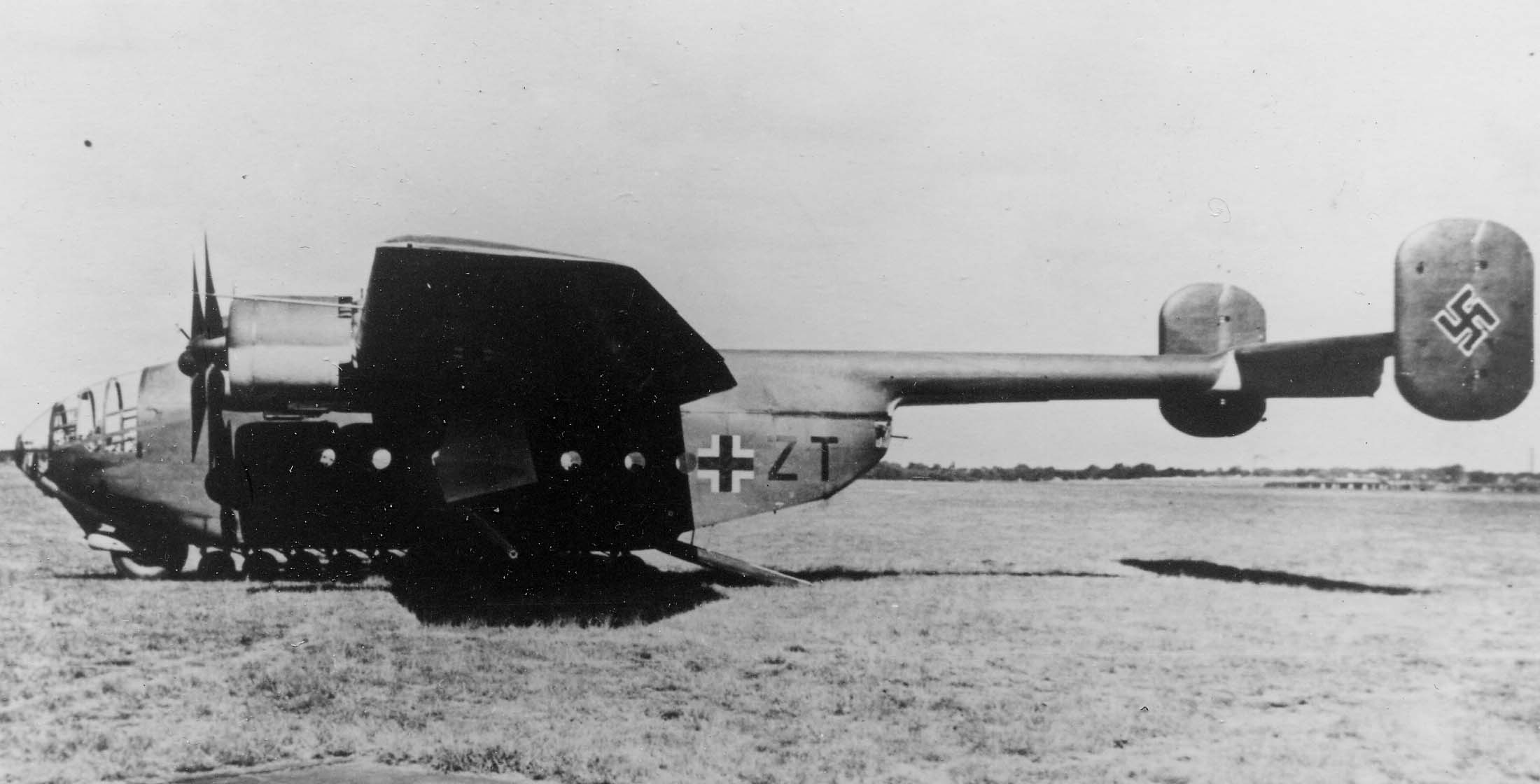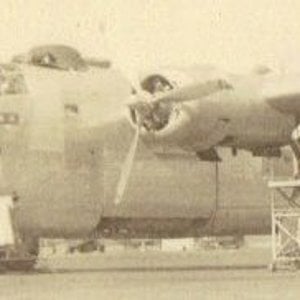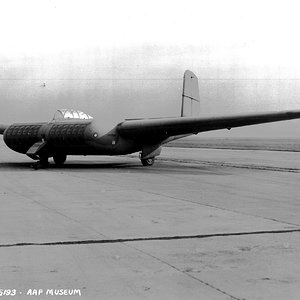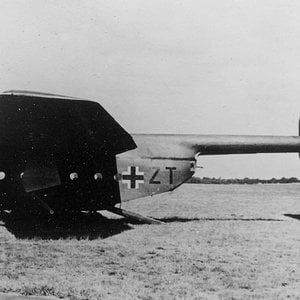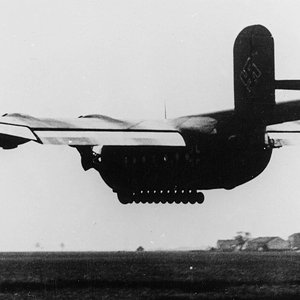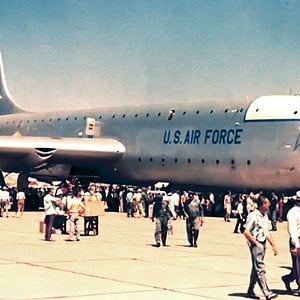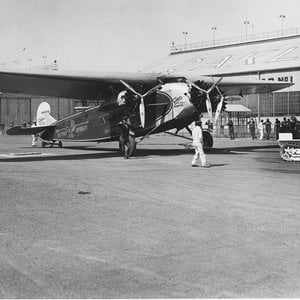Navigation
Install the app
How to install the app on iOS
Follow along with the video below to see how to install our site as a web app on your home screen.
Note: This feature may not be available in some browsers.
More options
You are using an out of date browser. It may not display this or other websites correctly.
You should upgrade or use an alternative browser.
You should upgrade or use an alternative browser.
DevelopmentEven before the prototypes were complete in 1941, the Focke-Wulf Fw 190 project had been earmarked to use the BMW 801A/B, and was proving to be a capable design. Production of the BMW 801 was insufficient to supply this new demand, and the Ar 232 was forced to use another engine. Eventually, the BMW Bramo 323 from the Junkers Ju 352 was selected instead, as it was already in production and could meet requirements if the Ar 232 really did replace the Ju 52/3m in service. The prototypes were far enough along that switching engines would have seriously delayed the program, so the first two were to be completed as the Ar 232A, and the third and a newly ordered fourth as the Ar 232B. The third and fourth prototypes (and all production aircraft) used four engines (in place of the two specified in the RLM specification) in order to provide the desired performance.
An Ar 232A-0 in 1945The first two prototypes, bearing the Stammkennzeichen alphabetic codes GH+GN and VD+YA respectively, started trials in early 1941. The first flight resulted in the collapse of the nose gear, but the millipede wheels saved the aircraft from damage. A further ten pre-production machines were built, and were used operationally as the Ar 232A-0 while awaiting production versions. In general, the Ar 232 completely outperformed the Ju 52/3m. It carried roughly double the load over longer distances, operated from shorter runways and rougher fields if need be, and cruised about 70 km/h (44 mph) faster.
The Ar 232B program ran at the same time. With four 895 kW (1,200 hp) Bramo 323s, power increased from 2,386 kW (3,200 hp) to 3,580 kW (4,800 hp), solving the A model's problem of having little excess power in case of engine failure. This change also required the wing to be extended slightly, the span increasing just over 3 m (9 ft 10 in) in total. The extra weight of the engines also moved the center of gravity forward, which was offset by extending the cargo area rearward another meter.
Two four-engined prototypes were ordered, the V3 and V4, and V3 first flew in May 1942. A further 10 were then ordered as the Ar 232B-0, and were used widely in an operational role. However, this was the only order for the design, as the Luftwaffe gave transport aircraft production a very low priority. Many of those produced were used by Arado to transport aircraft parts between its factories, and did not see front-line service.
Plans were also made to replace the outer wing sections and control surfaces with wooden versions to conserve then-limited supplies of aluminium. Originally to be known as the Ar 232C, the design dragged on and was later re-named the Ar 432. Plans were finally put into place to start production in October 1945, but the war ended without even a prototype being produced. Two even larger planned versions, the Ar 532 and the Ar 632, would have almost doubled the wingspan to 60 m (196 ft 10 in) and added another two engines.
Two of the B-0s were captured by British forces at the end of the war. After test flights by Eric "Winkle" Brown, who gave the design excellent marks, they were used by the Royal Air Force on flights between England and Germany after the war.
An Ar 232A-0 in 1945The first two prototypes, bearing the Stammkennzeichen alphabetic codes GH+GN and VD+YA respectively, started trials in early 1941. The first flight resulted in the collapse of the nose gear, but the millipede wheels saved the aircraft from damage. A further ten pre-production machines were built, and were used operationally as the Ar 232A-0 while awaiting production versions. In general, the Ar 232 completely outperformed the Ju 52/3m. It carried roughly double the load over longer distances, operated from shorter runways and rougher fields if need be, and cruised about 70 km/h (44 mph) faster.
The Ar 232B program ran at the same time. With four 895 kW (1,200 hp) Bramo 323s, power increased from 2,386 kW (3,200 hp) to 3,580 kW (4,800 hp), solving the A model's problem of having little excess power in case of engine failure. This change also required the wing to be extended slightly, the span increasing just over 3 m (9 ft 10 in) in total. The extra weight of the engines also moved the center of gravity forward, which was offset by extending the cargo area rearward another meter.
Two four-engined prototypes were ordered, the V3 and V4, and V3 first flew in May 1942. A further 10 were then ordered as the Ar 232B-0, and were used widely in an operational role. However, this was the only order for the design, as the Luftwaffe gave transport aircraft production a very low priority. Many of those produced were used by Arado to transport aircraft parts between its factories, and did not see front-line service.
Plans were also made to replace the outer wing sections and control surfaces with wooden versions to conserve then-limited supplies of aluminium. Originally to be known as the Ar 232C, the design dragged on and was later re-named the Ar 432. Plans were finally put into place to start production in October 1945, but the war ended without even a prototype being produced. Two even larger planned versions, the Ar 532 and the Ar 632, would have almost doubled the wingspan to 60 m (196 ft 10 in) and added another two engines.
Two of the B-0s were captured by British forces at the end of the war. After test flights by Eric "Winkle" Brown, who gave the design excellent marks, they were used by the Royal Air Force on flights between England and Germany after the war.

